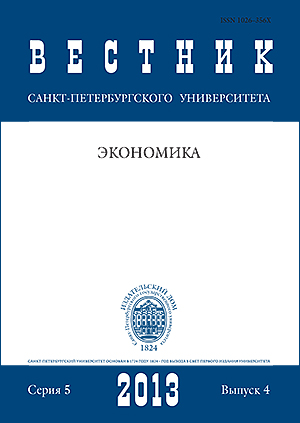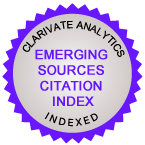Is Unsteady Economic Growth a «New Regularity»?
Abstract
The paper is aimed to analyze a problem of instable economic growth which occurred in the industrially developed countries aft er 2008–2009 crisis. This phenomenon has aroused the enhanced interest of economists and triggered many discussions among them: whether such instability is a temporary feature of a complicated process of post-crisis recovery for the leading countries, or it has come about as a «new normal» for their long-term performance, and systemic changes in the internal mechanism of existing model of the market economy are presupposed to overcome it.
Considering the past global crisis as a systemic, the author discovers its key consequences for modern post-crisis development. Basic characteristics and causes of instable growth in developed economies are explored, along with variations in macroeconomic stabilization policy. Special attention is paid to the study of a current state of Russian economy which is highly influenced by negative processes in the world economy. It has also been trapped into the situation of slowdown of economic growth, with a real danger to freeze in stagnation phase.
The necessity of a radical reform of the present-day Ponzi-style fi nancial model is argued. Key problems of economic growth cannot be resolved by simple improving and correction of stabilization policy. It’s of greater importance for Russia not to be confi ned by the objective of financial stabilization and reduction of infl ation. Defects and shortcomings of the raw materials-export-oriented model require its drastic restructuring on even more extensive scale, compared to capitalist countries. Reformation of the economic system, combined with the active industrial policy and adoption of a «new industrialization» — that is the proper way towards dynamic and stable economic growth.
Keywords:
world recession, unstable economic growth and its reason, new regularity, stabilization policy, aft er crisis growth types, after crisis growth types, growth factors in Russia, import substitution, new industrialization
Downloads
References
References in Latin Alphabet
Translation of references in Russian into English
Downloads
Published
How to Cite
Issue
Section
License
Articles of the St Petersburg University Journal of Economic Studies are open access distributed under the terms of the License Agreement with Saint Petersburg State University, which permits to the authors unrestricted distribution and self-archiving free of charge.






